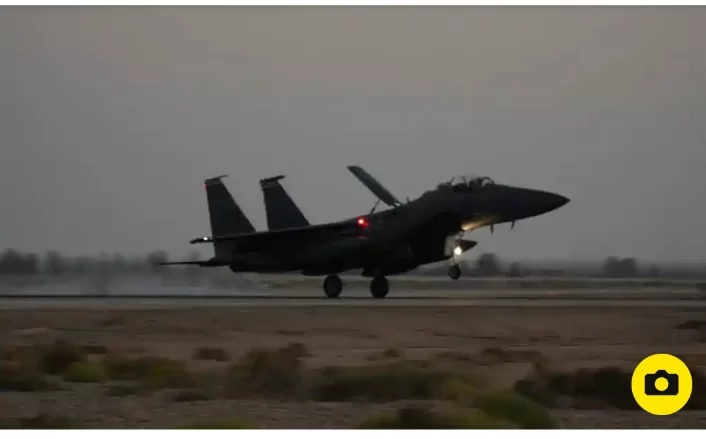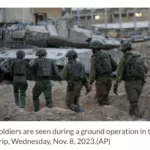In a move fraught with international implications, the United States has executed targeted strikes against a weapons storage facility located in eastern Syria. The Pentagon has disclosed that this facility was allegedly utilized by Iran’s formidable Islamic Revolutionary Guard Corps (IRGC) and its affiliated groups.
Over the past few weeks, the US and its coalition forces have faced an onslaught of attacks, numbering at least 40, orchestrated by Iran-backed factions in Iraq and Syria. These relentless provocations have raised profound apprehensions that the ongoing Israel-Hamas conflict may burgeon into a broader regional conflagration. As a dire consequence, forty-five US servicemen have sustained either traumatic brain injuries or minor wounds in these hostilities.
The US Secretary of Defense, Lloyd Austin, in a formal statement, conveyed that the airstrikes conducted on Wednesday were executed by two formidable US F-15 fighter aircraft. These strikes were executed as a robust response to the recent spate of assaults targeting US personnel.
Secretary Austin emphatically asserted that these attacks on US troops must cease without delay. He cautioned, “If attacks by Iran’s proxies against US forces persist, we will not hesitate to employ further imperative measures to safeguard our personnel.”
The Syrian Observatory for Human Rights, a reputable war monitor, reported that Wednesday’s precise airstrike led to the demise of nine individuals affiliated with Iran-backed factions within Syria. It is important to note that this toll remains subject to independent verification.
Historically, the US has occasionally resorted to retaliatory actions against Iran-backed forces in the region following hostilities directed at American troops. Notably, on October 26, US forces initiated strikes against two facilities associated with the IRGC and its affiliated groups.
Currently, the US maintains a contingent of 900 troops in Syria and an additional 2,500 in neighboring Iraq, assigned with the mission of advising and assisting local forces. This task involves preventing any resurgence of the Islamic State, which, in 2014, had seized significant territories within both countries but was subsequently defeated.
Alarmingly, there exists a palpable concern that the Israel-Hamas dispute could spiral beyond its current boundaries, potentially placing US military installations in isolated positions at risk.
Recent incidents underscore this apprehension. An armed drone targeted the al-Harir airbase, which houses US forces in northern Iraq, as corroborated by two Reuters security sources. This event followed earlier warnings of a possible attack at the US embassy in Baghdad, which triggered alarm bells.
While the sirens at the US embassy sounded on Wednesday evening, inhabitants of Baghdad’s heavily fortified Green Zone, which accommodates the embassy, reported the event. However, there were no reports of projectiles impacting the area or causing casualties.
Notably, a spokesperson for the US embassy and an Iraqi government security official refrained from providing immediate comment.
A group identified as the “Islamic Resistance in Iraq” promptly claimed responsibility for the recent attack, affirming in a statement that it had executed the strike utilizing two drones, targeting the al-Harir airbase.
Earlier on the same day, a US MQ-9 drone met a similar fate near Yemen, having been downed by the Iran-aligned Houthi movement.
To address the rising tensions, the United States has dispatched warships and fighter aircraft to the region following the outbreak of the Israel-Hamas conflict on October 7. This mobilization includes the deployment of two aircraft carriers with the addition of thousands of troops to the region, all aimed at deterring Iran and its Iran-backed affiliates.
In light of these developments, Reuters has disclosed that the US military is implementing heightened security measures to safeguard its Middle East-based forces amidst the surge in attacks by suspected Iran-backed groups. Additionally, the contingency of evacuating military families, if necessary, remains under consideration.
The measures encompass an augmented frequency of US military patrols, limitations on access to base facilities, and an enhanced intelligence collection capability, leveraging drones and other surveillance methodologies.






